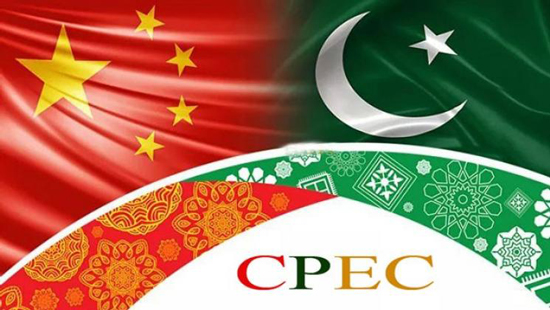THE year 2023 marks 10 successful years of the China-Pakistan Economic Corridor (CPEC). Over a decade, CPEC contributed massively to promoting Pakistan’s economic growth, sustainable development goal and soft power image. In the post-2013 era, Pakistan was seen in the prism of terrorism and extremism by foreign investors. Since 2013, CPEC has changed the perception of foreign investors. China’s massive investment morphed the country into a safe destination for foreign investment. The economic and political dividends of CPEC are quite obvious. Pakistan has been witnessing modernization in infrastructure and steep economic rise and job opportunities.
According to the Chinese Ambassador to Pakistan Nong Rong, CPEC so far has generated more than 192,000 jobs, encompassing the building of 510km of highways, 6,000MW of power supply and 886km of transmission line resulting in boasting the socio-economic development in Pakistan. The provision of cheap and clean electricity through Karot Hydropower eased the hardships of industrialists and common masses who were badly affected by the prolonged load shedding. The operationalization of TEL and Nova power plants in Thar, Sindh, with the indigenous coal fulfilling electricity deficiency, the connection of the Shanghai Electric Thar coal-based power plant to the national grid, by and large, is a great milestone in reducing the load shedding in the country.
Over a decade, regional connectivity and rural-urban synergy witnessed an exponential rise. Chinese companies have shown a great deal of interest in Special Economic Zones (SEZs), paving the way for job opportunities and the transfer of technology and skills. SEZs contributed to the diversification of the economy and proved more effective in the enhancement of foreign exports and reduction of imports.
Ostensibly, the agriculture sector is the backbone of the country’s economy contributing 23% to the GDP and creating 45% of jobs. The second phase of CPEC focused on the agricultural and modernized agriculture sectors. Fruit and food processing across the country under CPEC in the SEZs is underway. Rashakai Economic Zone in Nowshera, KP, has 1,000 acres of land for investment feasibility for fruit food packaging.
The Bostan Industrial Zone located near Kuchlak, Pishin district in Balochistan is geo-strategically well placed having 1,000 acres that would build cold storage, fruit processing and halal food industry. The peripheral areas to the Bostan Industrial Zone such as Qila Abdullah, Qila Saifullah and Ziarat are well-known for fruit, vegetable and livestock. The development of 200 acres Phase-1 has already been accomplished and industrial plots are open for commercial allotment.
Balochistan is called “the fruit basket of Pakistan”. The province contributes 90% of the national production of grapes, cherries and 60% peaches, apricots and pomegranates. The province also produces 34% of the country’s apples. Bostan Industrial Zone as far as Balochistan’s fruit and vegetable production is concerned will alter the destiny of the province. CPEC is a ray of hope to alleviate the marginalization and deprivation of the province. Meanwhile, Allama Iqbal Industrial Zone located in the textile hub of Pakistan, Faisalabad, is believed to have been the largest zone comprising 3,217 acres is manufacturing food processing and seed embarking on the path to poverty reduction and offering job opportunities.
Pakistan merely spends 0.1% in Research and Development (R&D) in the agriculture sector compared to the global average of 3% resulting in less crop production. Under CPEC, Pakistan concentrated on modernizing the agriculture sector. Since 2018, China’s Sinochem Group has introduced wheat varieties.
Globally, China and Pakistan are ranked second and fourth largest producers of cotton. Both have a huge potential for vertical yield improvement by utilizing a joint research process. Pakistan under CPEC in 2019 planned to establish a research laboratory in Multan in a bid to develop climate-resilient cotton cultivars. Beijing and Islamabad have been conducting joint research on new varietal development at Cotton Research Institute in Henan. Against this backdrop, the University of Agriculture Faisalabad (UAF) Pakistan and Xinjiang Agricultural University (China) conducted successful collaborative work on experimental mechanical picking on cotton to improve its purity.
CPEC is not only confined to Pakistan, it is gaining currency regionally. The extension of CPEC to Afghanistan is a game changer for the war-torn country. In May, Foreign Ministers of China, Pakistan and Afghanistan met in Islamabad and agreed on the extension of CPEC to Afghanistan. Qin Gang, Chinese Foreign Minister in his meeting with his Pakistani counterpart reaffirmed their commitment by extending CPEC to Afghanistan and maintained, “The two sides agreed to continue their humanitarian and economic assistance for the Afghan people and enhance development cooperation in Afghanistan, including through extension of CPEC to Afghanistan,”.
Bear in mind, South Asia economically is the least integrated region of the world. Even Sub-Saharan Africa economically is more connected than South Asia. Arguably, CPEC would turn out to be the harbinger of regional connectivity in the foreseeable future. Pakistan has learnt an instructive lesson from China replicating its model of promoting regional connectivity by assisting the Taliban regime to become a part of CPEC. The CPEC is not only a game changer for Pakistan but also for the whole region. CPEC is the epitome of Pakistan’s foreign policy.
CPEC has witnessed a successful decade and will progress more in the coming years because, in the evolving regional politics, there has been a growing overlap of interest between China and Pakistan. Both parties will do their utmost to achieve further success under CPEC with the aim of promoting regional connectivity, reducing poverty, modernizing Pakistan’s infrastructure, diversifying the economy and coping with the climate change challenges.
Email: [email protected]










